Spider flower and bees
I was walking around the garden this wonderfully cool morning, trying to find something to photograph. I was hoping for something insect related, as the night before I was tempted to take a bunch of fly and ant photos but decided to spare you, as the subject matter was a bit too grisly. (If you're curious, I'll just remind you that it's baby bunny season here, and we have a nearly-feral cat as a regular visitor.) Anyway, I was drawn this morning to the Cleome or "spider flowers", and soon noticed several honey bees visiting them. Perfect!
Cleome is to me a very interesting plant, and apparently it was to the bees too. I like it because once it starts flowering it doesn't stop, with each flower head continuously elongating, sort of like an atomic blast mushroom cloud, but of lovely flowers instead of nasty radioactive dust.
But I'm not talking about the flowers today, not really. I will say that I've got a patch of Cleome that's about 4' by 3' this year:
I've grown Cleome mixed in with other plants before, and have always wanted to see what it would look like in a mass planting on its own. This is not a huge bed of them, but it still looks pretty amazing. Gives the bees a bigger target too.
So, the bees. I like almost any plant that attracts bees, and I'm always happy to see them happily buzzing around. As the Cleome patch was in partial sun, I was waiting for the bees to land on the sunlit blooms, so had a lot of time to observe.
I noticed some bees going to the center of the blooms as expected:
I also saw bees that seemed very confused. They would land on the really long filaments, dangle there for a moment, then fall off.
I thought for sure there was something wrong with these bees. Then I realized what they were doing: they were collecting pollen!
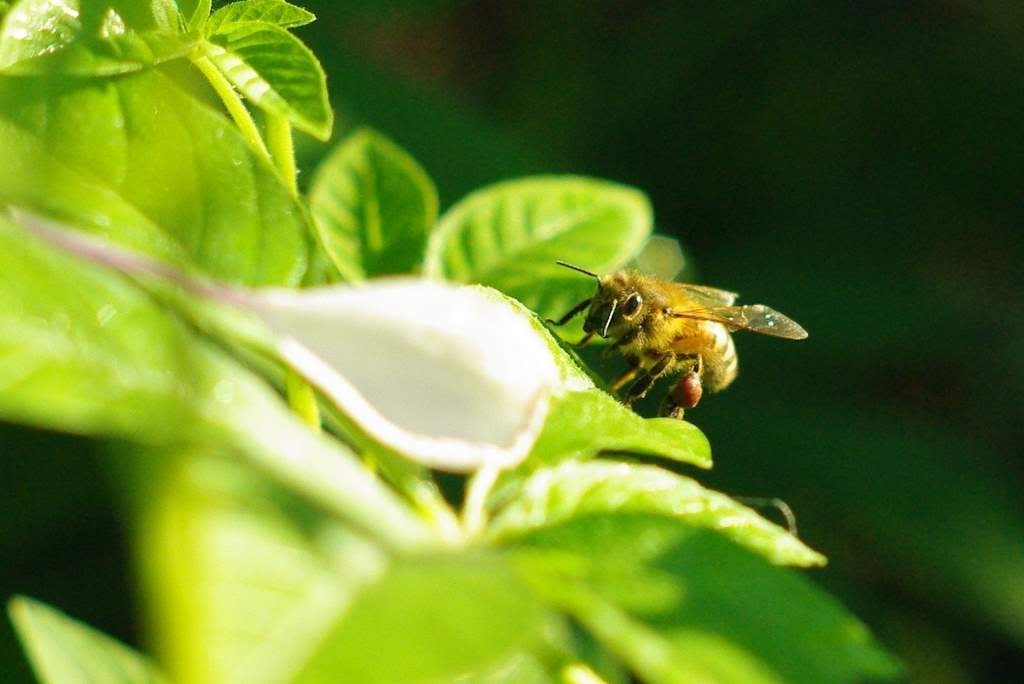 |
| I think this one is drinking dew from the leaf. |
I also saw the nectar-seeking bees flying around, rejecting most blooms long before they were close enough to tell if there was anything worth drinking there, or so I thought. When I moved to watching a few Cleome in the adjacent (mixed flower) bed, I realized that it was pretty obvious which blooms contained nectar:
 |
| Large drop of nectar. Maybe some dew in there too? |
I'm not sure if that's pure nectar, or a mix of nectar and dew, but this bee drank for quite a long time:
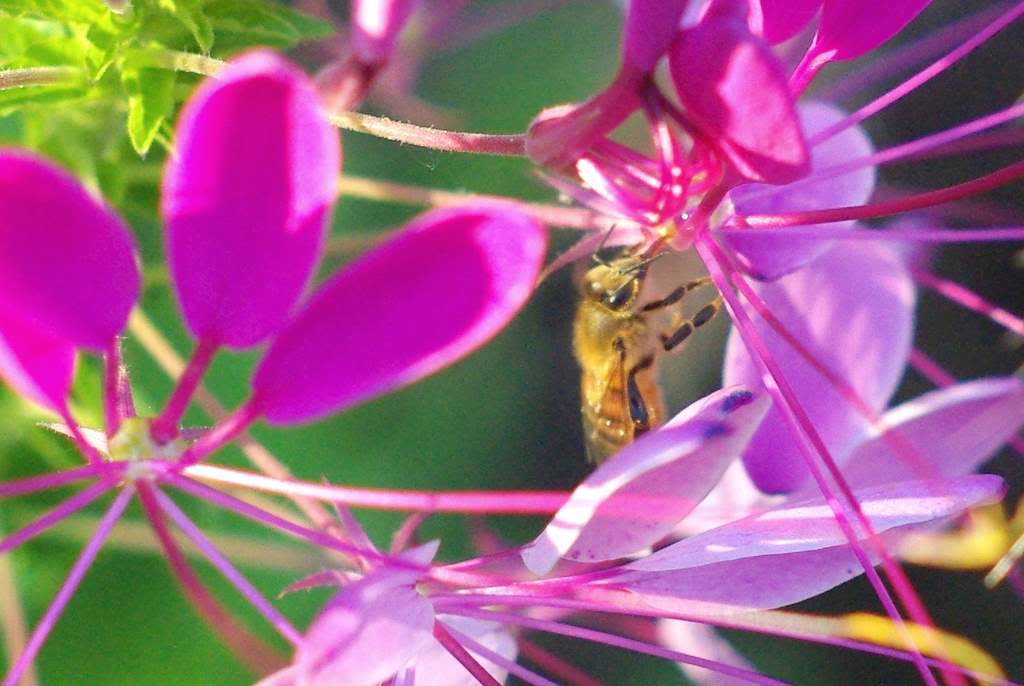 |
| Bee tongue! |
So thanks to the shadows of trees, I was "forced" to spend more time watching these flowers than I had planned on this morning, but I learned a bit more about bees. Time well-spent I think!
If you really want to learn more about honey bees, check out the Curbstone Valley Farm blog. It's a fantastic blog about gardening and beekeeping in California, very well written with beautiful photos. Definitely worth a look!
.
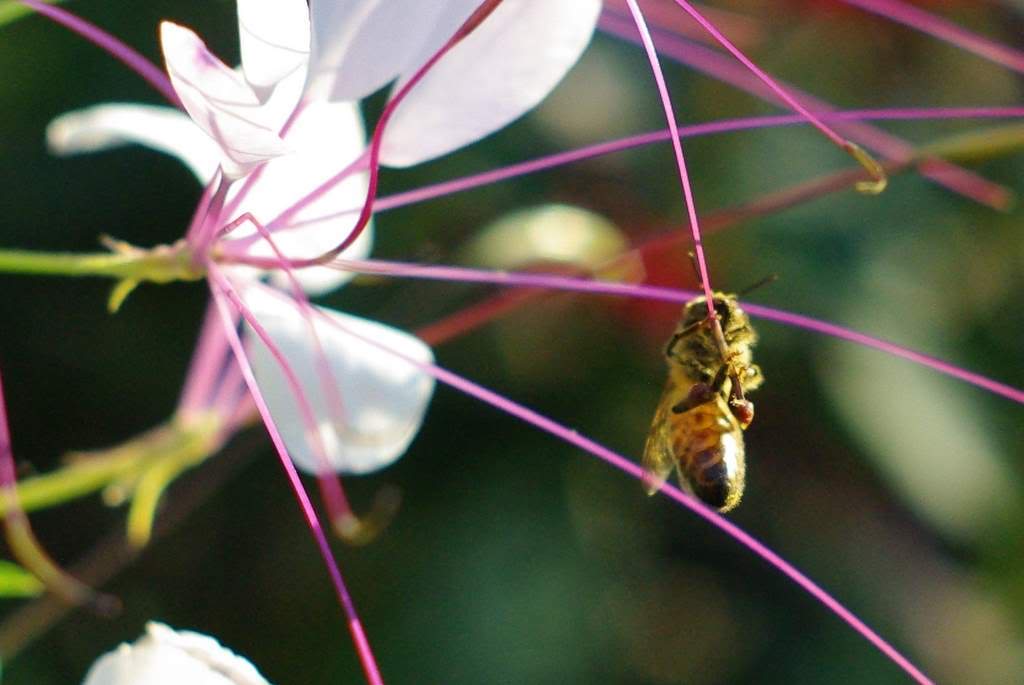
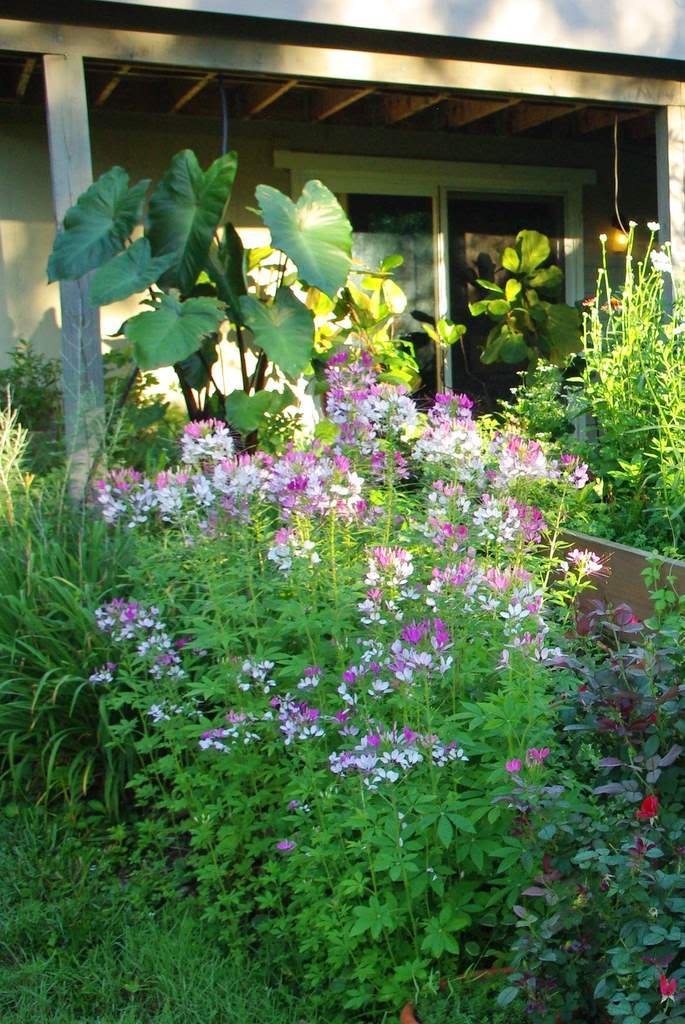
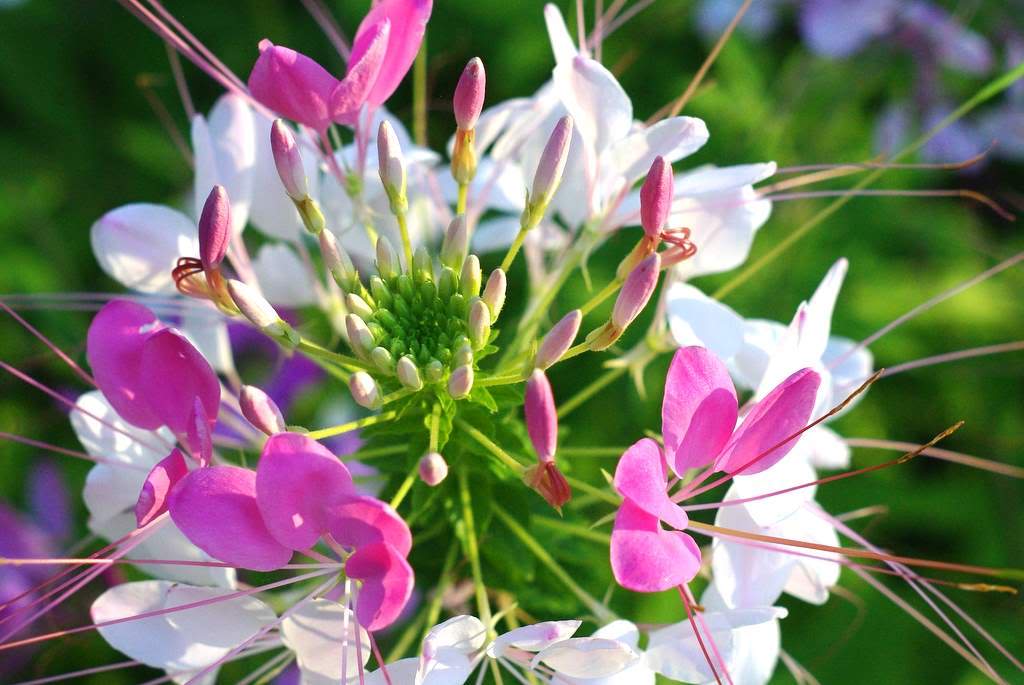

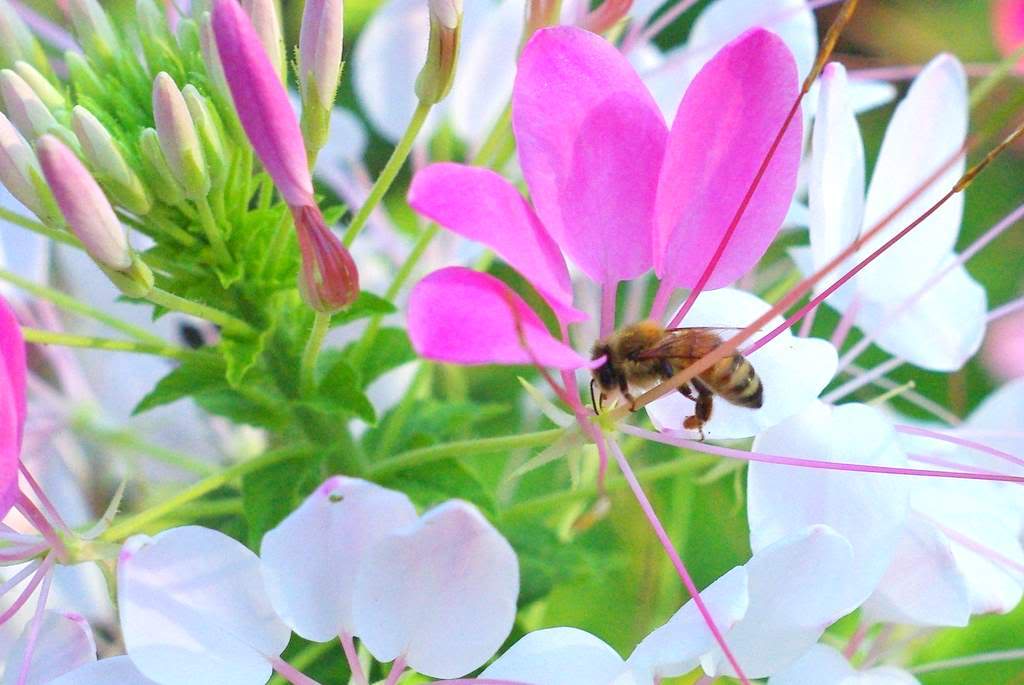
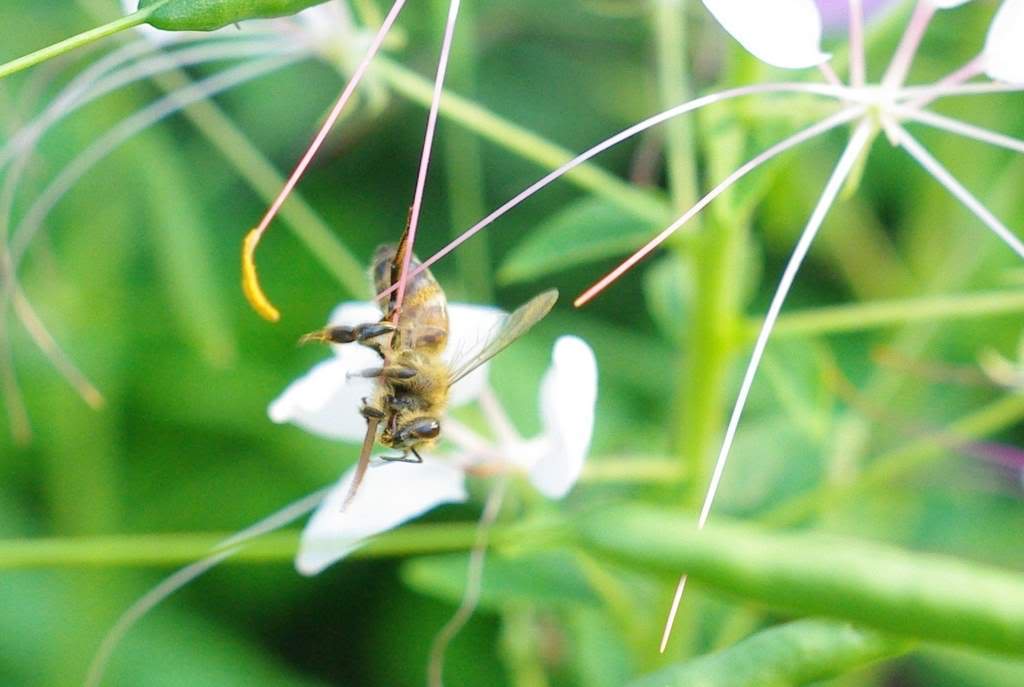

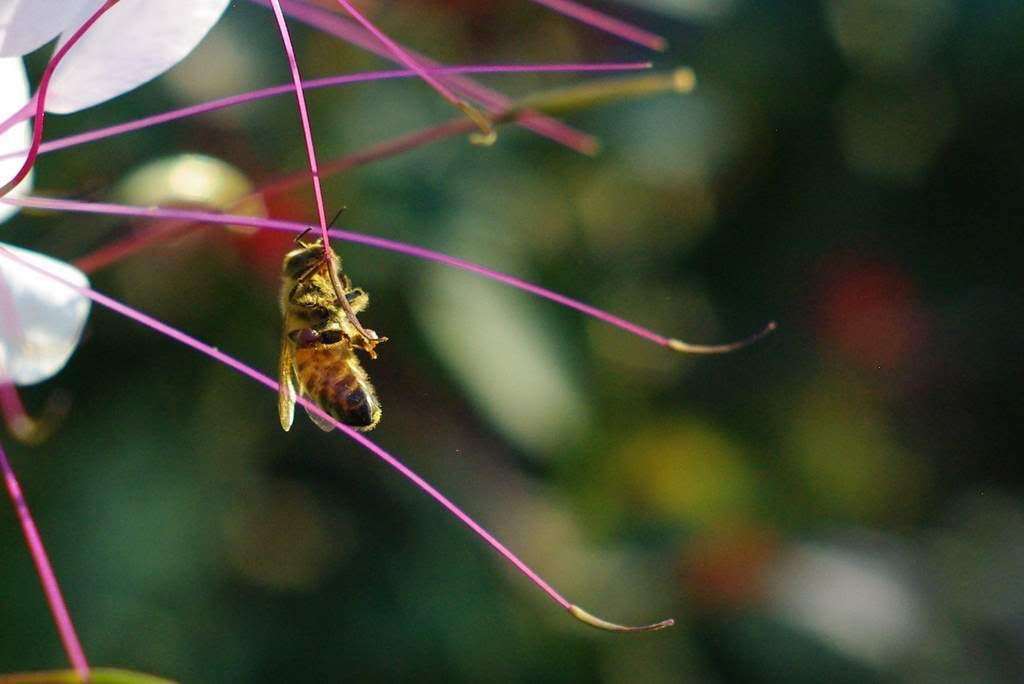
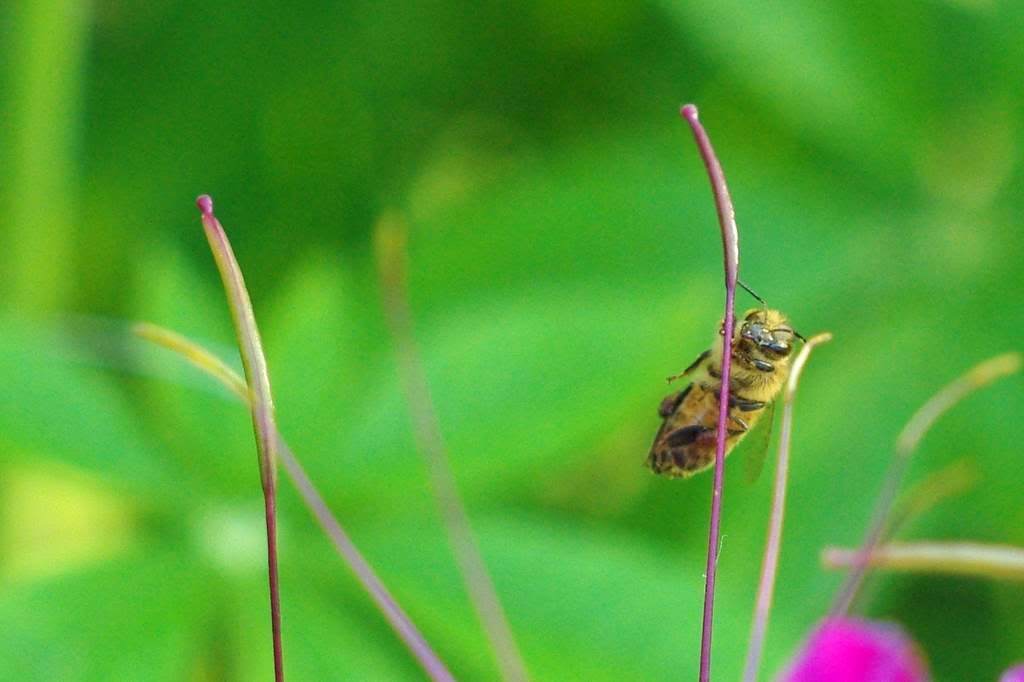





Excellent post. I love the photos of your cleomes. I'd never seen one before.
Love the photos of the bees on the Cleome! It looks like they're having so much fun among the filaments. Thanks so much for the shout-out too, very much appreciated! :) When you are you getting your bees Alan?
I was probably standing in the same spot long enough while taking these photos that a swarm might have used me. I wondered what I would do in that situation. Then I thought about a "beard of bees"...
So I guess if they swarm upon my body I would then consider hiving them, as they would have chosen me. ;-)
A great post, with incredible photos of the bees. I'm impressed you were able to get such good photos of honeybees because they move so fast! You might be interested in the Great Sunflower Project, where you count the number of bees that come to a flower in 15 minutes and submit the data. I wrote about it today.
Super post! I could watch the bees for hours! They are really fascinating creatures.
I'm really loving the cleome I have in my garden and wish I had more - your photos in this post are stunners - the flowers are so beautiful to photograph. I really want more of them ....
Great pictures and blog! I'm about to plant some cleome for our bees as they are a good source of nectar when other sources are rare. I hope we have as much success with it as you.
Loved your bee and cleome photos!! Great antidote to February :-)